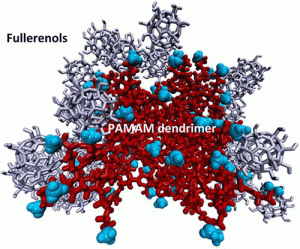Pharmaceuticals are not the first pollutants people think of when discussing water pollution but, for those who don’t know, it’s a big issue and scientists at the University of Surrey (UK) have developed a technology they believe will help to relieve the contamination. From an April 10, 2017 University of Surrey press release (also on EurekAlert),
The research involves the detection and removal of pharmaceuticals in or from water, as contamination from pharmaceuticals can enter the aquatic environment as a result of their use for the treatment of humans and animals. This contamination can be excreted unchanged, as metabolites, as unused discharge or by drug manufacturers.
The research has found that a new type of ‘supermolecule’, calix[4], actively seeks certain pharmaceuticals and removes them from water.
Contamination of water is a serious concern for environmental scientists around the world, as substances include hormones from the contraceptive pill, and pesticides and herbicides from allotments. Contamination can also include toxic metals such as mercury, arsenic, or cadmium, which was previously used in paint, or substances that endanger vital species such as bees.
Professor Danil de Namor, University of Surrey Emeritus Professor and leader of the research, said: “Preliminary extraction data are encouraging as far as the use of this receptor for the selective removal of these drugs from water and the possibility of constructing a calix[4]-based sensing devices.
“From here, we can design receptors so that they can bind selectively with pollutants in the water so the pollutants can be effectively removed. This research will allow us to know exactly what is in the water, and from here it will be tested in industrial water supplies, so there will be cleaner water for everyone.
“The research also creates the possibility of using these materials for on-site monitoring of water, without having to transport samples to the laboratory.”
Dr Brendan Howlin, University of Surrey co-investigator, said: “This study allows us to visualise the specific receptor-drug interactions leading to the selective behaviour of the receptor. As well as the health benefits of this research, molecular simulation is a powerful technique that is applicable to a wide range of materials.
“We were very proud that the work was carried out with PhD students and a final year project student, and research activities are already taking place with the Department of Chemical and Processing Engineering (CPI) and the Advanced Technology Institute (ATI).
“We are also very pleased to see that as soon as the paper was published online by the European Journal of Pharmaceutical Sciences, we received invitations to give keynote lectures at two international conferences on pharmaceuticals in Europe later this year.”
That last paragraph is intriguing and it marks the first time I’ve seen that claim in a press release announcing the publication of a piece of research.
Here’s a link to and a citation for the paper,
A calix[4]arene derivative and its selective interaction with drugs (clofibric acid, diclofenac and aspirin) by Angela F Danil de Namor, Maan Al Nuaim, Jose A Villanueva Salas, Sophie Bryant, Brendan Howlin. European Journal of Pharmaceutical Sciences Volume 100, 30 March 2017, Pages 1–8 https://doi.org/10.1016/j.ejps.2016.12.027
This paper is behind a paywall.

